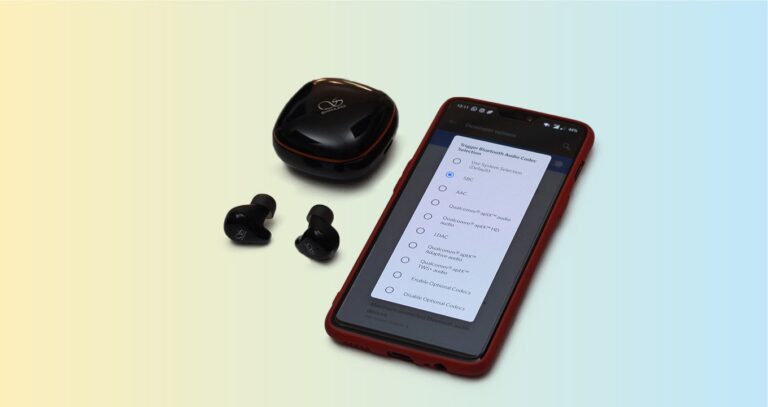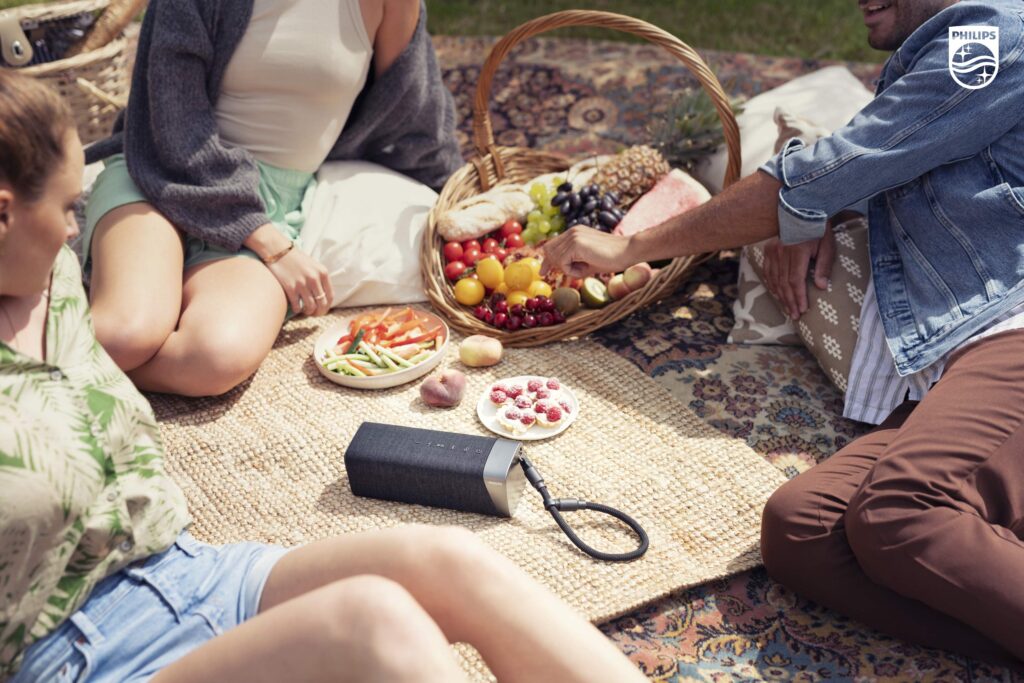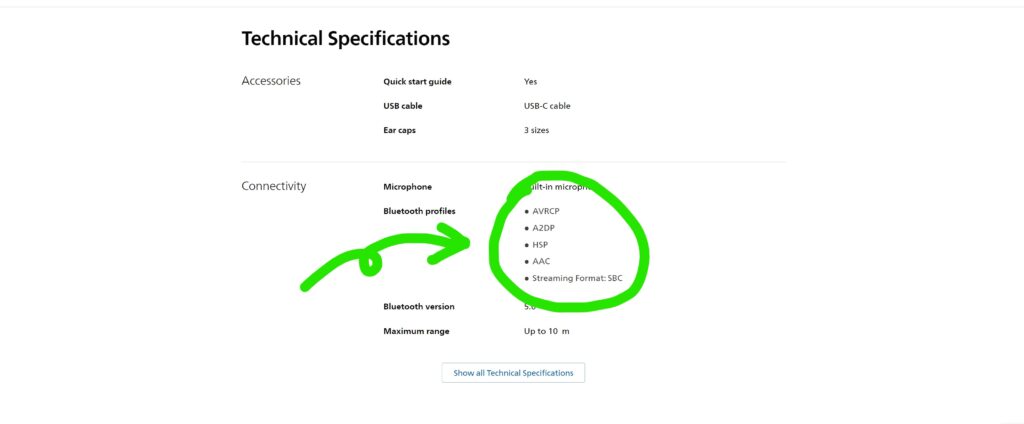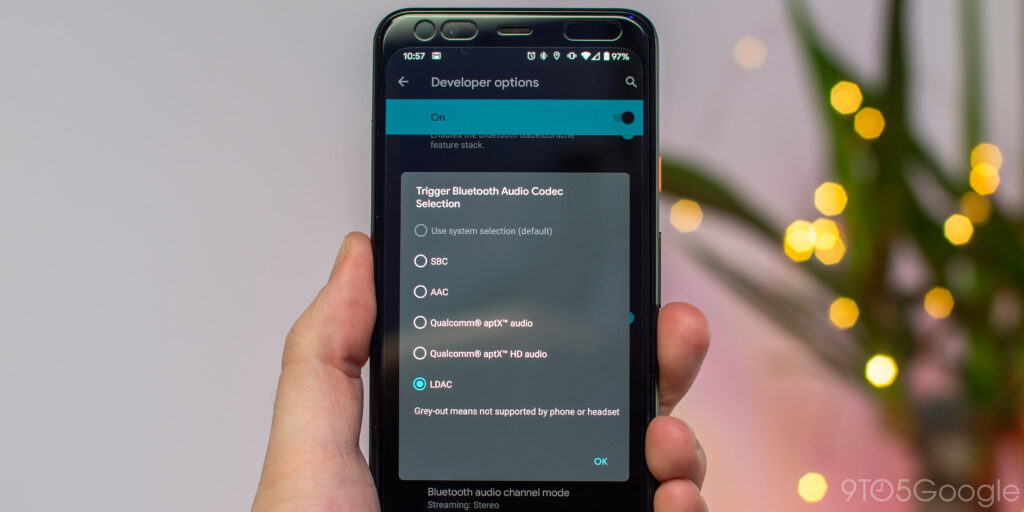
While shopping for wireless headphones and speakers, there’s one important feature that people often overlook: Bluetooth codec.
This is totally understandable, since all the names in this ring sound similar and confusing, AAC, aptX, LDAC and so on. But different codecs come with different latencies, transfer rates and varying levels of stability, which all have an effect on the sounds you hear. Understanding these differences is one of the key milestones in the pursuit for excellent wireless audio quality.
How does Bluetooth technology work?
When we send music files wirelessly from point A to point B, the original audio is compressed into a specified format more fit for transmission. There are many different ways to do this, and the algorithms involved in the encoding process are called codecs.
Audio codecs you need to know:


Bluetooth codecs help minimize space and bandwidth requirements for storage and playback. So when you pair your smartphone with your wireless BT speaker and press play, your favorite track won’t stutter or crash mid-song.
But convenience comes at a price. Digital to audio conversion sometimes affects the original quality of songs.
Every Bluetooth codec has its own unique speed and bitrate. A lower bitrate means better compression and worse sound quality, a high bitrate means better sound quality and worse compression.
Now let’s take a closer look at the different types of codecs:
-SBC
The SBC audio codec stands for “Low Complexity Subband Codec” and is basically the lowest common denominator among codecs. Although widely used, the compression causes noticeable quality losses.
Features:
- Low power consumption
- Supports 16-bit/48KHz files
- Bit rates up to 256kbps
- Universal compatibility
The BT receiver must support the same audio codec as the BT transmitter. For example, the LDAC codec will only be used if both the transmitter and receiver support LDAC. If there are any codec mismatches, your device will default to using the SBC codec.
-AAC
AAC stands for “Advanced Audio Codec” and describes an audio codec that is the standard for lossy digital audio compression. It also happens to be the license-free standard for YouTube, Sony Playstation and is the preferred audio codec by Apple. If you’re using a pair of AAC-compatible headphones and streaming music via Apple Music, iTunes or your stored AAC files, you’re theoretically getting no loss in audio quality.
Features:
- Consumes a lot of battery power
- Supports Android 8+
- Supports high bit rates
- Supports 24-bit/44.1 kHz audio files
-AptX
All AptX codecs are owned by Qualcomm, which introduced them as an improvement to SBC, addressing all the complaints about SBC’s sound quality and implementation. The AptX is the most popular Bluetooth codec as of 2021 and is supported by most Android smartphones.
AptX HD Features:
- Supports high bit rates of up tp 576kbps
- Supports 24-bit/48KHz audio files
- Doesn’t support iOS
- Can be used in Android 8+
- An improved APTX encoding profile
AptX LL Features:
- Zero smartphone support
- Latency as low as 32ms
- Supports high bit rates
- Supports 16-bit/44.1 kHz audio files
IF GAMING OR MOVIE-WATCHING MEANS A LOT TO YOU, MAKE SURE TO GET HEADPHONES THAT SUPPORT THE APTX LLC CODEC.
-LDAC
Sony’s LDAC Bluetooth codec is very promising and offers near-lossless audio quality. However, as this codec uses more data, any interference with the signal will reduce the bandwidth, consequently resulting in a drop of the signal quality. The benefits of LDAC’s HD capabilities will then be lost. Due to licensing issues, LDAC is also only supported by Sony headphones.
Features:
- Limited to Sony headphones
- Supports Android 8+
- Supports high bit rates of 990kbps
- Supports 24-bit/94KHz
-LC3
LC3, or LE (low energy) Audio, also known as Low Complexity Communications Codec, is the new default Bluetooth codec, introduced at the CES 2020 trade show. It delivers aid to the deaf and hard-of-hearing patients by making a single source of Bluetooth stream to multiple Bluetooth passes. With LC3 codec, Bluetooth hearing aids can be able to stream audio (train departure information) while keeping the user aware of their surroundings.
Therefore, different broadcasts can be transmitted to a single pair of wireless earbuds. LC3 audio breaks up a single 160kbps stream into 80kbps each. This works great if you and a friend want to share a pair of earbuds.
Features:
- Supports a wide range of usable bitrates
- Supports bit depths of 16, 24 and 32 bits per audio sample
- Supports a frame interval of 7.5ms to 10ms
- Supports a large number of audio channels
-Samsung Scalable Codec
Samsung scalable codec work similarly to APTX codec, the only difference is that it only works with select Samsung devices, particularly Samsung Galaxy S20 and Samsung Galaxy Buds Plus.
The unique thing about this codec is its ability to support a wide range of bitrates. It can adaptively switch bitrate, depending on the stability of the Bluetooth connection, to maintain stable connection and reduce choppy audio.
FOR THOSE WHO ARE STILL CONFUSED, HERE’S A GOOD RULE OF THUMB: APTX AND APTX HD ARE ANDROID USERS’ CHOICE CODECS WHILE IPHONE USERS SHOULD KEEP TO AAC-SUPPORTED HEADPHONES.

Here’s how to change the Bluetooth codec on your Android smartphone and improve audio quality
- Open your phone’s “Settings” and go to the “Developer Options” smartphone. If you have not activated it, tap the phone’s build number seven times to activate the Developer options. This option gives you more choices to tweak your phone to suit your needs. After activating the developer options, you can access it anytime you want to.
- Open Bluetooth in your phone and scan for your wireless headphones. Pair them and connect to the Android smartphone.
- Now, scroll to “Audio codec” in the Developer options and click it.
- The option will display numerous Bluetooth audio codecs. Pick another one apart from the SBC option. Provided your wireless headphones support your chosen audio codec, it will increase the sound quality.